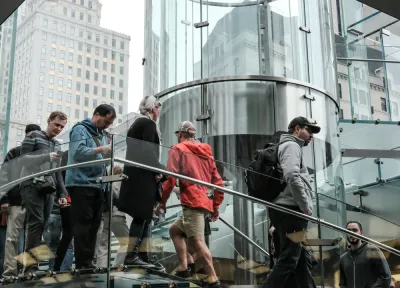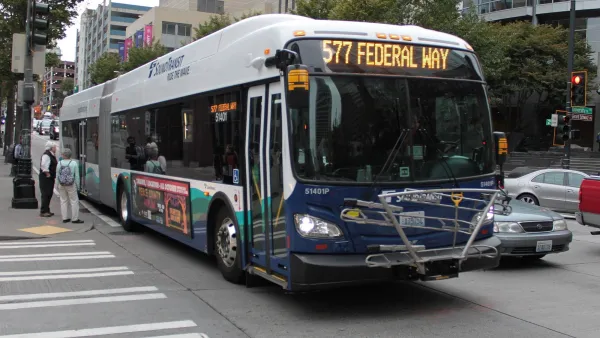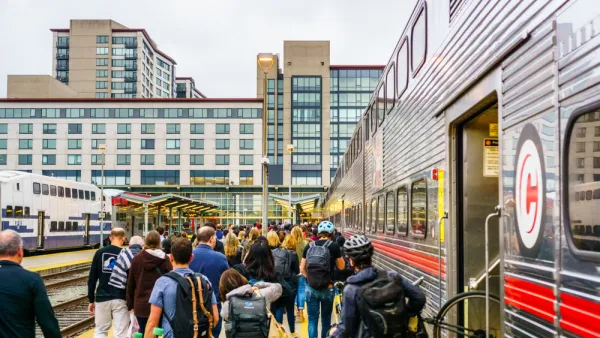The number of people commuting 20 minutes or more each way dropped by close to half a million, while short commutes rose slightly.

New data shows that the number of workers with long commutes (more than 20 minutes each way) in the Seattle area dropped sharply during the pandemic, while "the number of people with short commutes actually increased a little."
As reported by Gene Balk, Nielsen survey data shows "In the period from February 2020 to February 2021, about 318,000 workers age 21 and older in the Seattle metro area were not typically commuting," as compared with 125,000 in the prior year. "That pencils out to 193,000 fewer commuters just because of remote work. On top of that, the number of people in our area who were not employed, for whatever reason, increased by 74,000." In short, "100% of the net decline in commuting was due to those folks with commutes of 20 minutes or longer." Meanwhile, the number of short commutes, particularly those under ten minutes, increased slightly.
One explanation for this disparity is the correlation between average commute times and professions. "The data shows that, on average, people with shorter commutes are more likely to work jobs that could be categorized as 'blue collar' — and these were often jobs deemed essential during the pandemic (such as food service and grocery, transportation, delivery and retail)," jobs which typically do not have remote work options. "The data shows roughly half (49%) of the Seattle-area workforce with a job categorized as blue collar had a commute time of less than 20 minutes. In comparison, only about 37% of white-collar workers had commute times of less than 20 minutes."
FULL STORY: A quarter of a million long commutes disappeared during the pandemic in the Seattle area

National Parks Layoffs Will Cause Communities to Lose Billions
Thousands of essential park workers were laid off this week, just before the busy spring break season.

Retro-silient?: America’s First “Eco-burb,” The Woodlands Turns 50
A master-planned community north of Houston offers lessons on green infrastructure and resilient design, but falls short of its founder’s lofty affordability and walkability goals.

Delivering for America Plan Will Downgrade Mail Service in at Least 49.5 Percent of Zip Codes
Republican and Democrat lawmakers criticize the plan for its disproportionate negative impact on rural communities.

Test News Post 1
This is a summary

Test News Headline 46
Test for the image on the front page.

Balancing Bombs and Butterflies: How the National Guard Protects a Rare Species
The National Guard at Fort Indiantown Gap uses GIS technology and land management strategies to balance military training with conservation efforts, ensuring the survival of the rare eastern regal fritillary butterfly.
Urban Design for Planners 1: Software Tools
This six-course series explores essential urban design concepts using open source software and equips planners with the tools they need to participate fully in the urban design process.
Planning for Universal Design
Learn the tools for implementing Universal Design in planning regulations.
EMC Planning Group, Inc.
Planetizen
Planetizen
Mpact (formerly Rail~Volution)
Great Falls Development Authority, Inc.
HUDs Office of Policy Development and Research
NYU Wagner Graduate School of Public Service





























